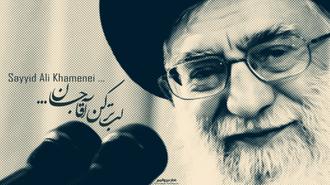The Number Of the shia’s Imams
The Number of the Shi‘a Imams
As we know, the true Twelver Imami sect is called “twelver” (ithna `ashariyya) since its followers believe that after the Holy Prophet (peace be upon him and his family), his successors were twelve people. And among all of his ‘ummah (community), they are the sole group who hold this belief; thus, the traditions about the twelve Imams which both Shi‘a and Sunnis have narrated – and whose origin from the Prophet (peace be upon him and his family) is undeniable – can only be applied to the Shi‘a sect among all Muslims. Naturally, the true sect will be limited to this group. In spite of all this, it is said that from some traditions – a few of which have been narrated in the book of Sulaim – it is possible to understand that the number of the Imams is thirteen, and this view has also been attributed to Ibn Sahl al-Nawbakhti. If, as it is said, a tradition with this content exists (or if Nawbakhti himself held this view, though this appears unlikely), how can it be explained and affirmed?
Answer:
We have given sufficient explanation about the tradition or traditions that indicate that the number of Imams (peace be upon them) is thirteen in the treatise “Clarity of Vision for One Who Follows the Twelve Imams.” There, we have clarified that the a tradition with this meaning does not exist; moreover, even if such a tradition were to exist, it is a tradition with a single narrator and with regard to principles of religion, beliefs, and issues in which attaining certainty is essential, traditions with single narrators are not relied upon.
In such an instance, only a firm rational argument or a tradition that is consecutively narrated (mutawatir) and certain to have originated from an infallible can be relied upon.
Furthermore, traditions that are mutawatir and have even passed the limits of tawatur (consecutive narration) indicate that the number of the Imams is twelve. In such a situation, if a single non-certain tradition is found in opposition to all these traditions, what creditability can it have, and how can a researcher rely on it? In addition, in the Musnad of Ahmad alone, it has been narrated through thirty-odd chains of narrators from the Noble Prophet (peace be upon him and his family) that the number of Imams (peace be upon them) is twelve, and in the Sahih of Muslim this point has been narrated through eight chains, and likewise in the remaining collections, Sahihs, Sunans (books of the sunnah), and books of the Ahl al-Sunnat, this topic has been referred to numerous times.
In Shi‘a books as well traditions have been narrated with hundreds of chains that the Imams will be twelve, all of which were narrated by well-known companions and followers (tabi`in) up to two centuries before the birth of the twelfth Imam Mahdi (may Allah hasten his return) (peace be upon him), and in reality this is counted as a type of prediction and information about the future.
In spite of all this, it was said that a tradition has been narrated from Sulaim that the Prophet (peace be upon him and his family) said to Amir al-Mu’minin (peace be upon him): “You and twelve people from your progeny are the true Imams.”
The reality is that in the present text and the reliable texts that before our time were in the possession of the scholars, this tradition did not exist. Moreover, there are many traditions in the book of Sulaim ibn Qays itself that explicitly mention the Imams and their names as twelve people, and have specified the names of those twelve personages from Amir al-Mu’minin (peace be upon him) to Imam Mahdi (may Allah hasten his return) (peace be upon him) in the same order in which the Shi‘a believe.
This book, written in the first century after the Hijra, is reliable and the sum of its material clearly establishes the truth of the Imami school, since it contains news about Imams who were not even born in that time. Firm signs and evidence indicates the correctness of this book.
Now, if we suppose the book contains such a tradition, that tradition can be interpreted in light of other books of traditions. That is, the intent of the tradition is to indicate the number of the Imams and that they are from the progeny of ‘Ali (peace be upon him), and since the majority – eleven out of twelve – of the Imams are from his progeny, it was explained in these words – which, it is likely, have not even been narrated in entirety.
Ibn Nadim attributed this view opposing the traditions regarding twelve Imams to Abu Sahl Nawbakhti, which appears not to be correct, since Abu Sahl Nawbakhti is not a person to express such an opinion, which has no evidence worthy of consideration. In Shi‘a books of biographies and rijal (biographies of the narrators of hadith), in which the Nawbakhti family has been mentioned in detail, such a view has not been related regarding Abu Sahl in the section pertaining to him or to others, all have praised his school of thought, belief, and action. It appears these are the same types of mistakes that occur in the books of biographies and sects, and the writers of which have passed over them out of carelessness.
Attributing such baseless beliefs to well-known individuals has no result other than to mislead uninformed or ill-informed people.
In any case, the issue of Mahdawiyyah (messianism) and concealment and the remaining issues exclusive to the twelfth Imam (peace be upon him) have been in discussion since the beginning of Islam. Rather, in accordance to what is in the extant Torah and Bible, the precedent of this belief has roots in Divine religions previous to Islam and in the Old and New Testaments.
___________________________________________
Source(www.al-islam.org)
#shia_imams #islam #shia #shia_muslim #twelve_imam


